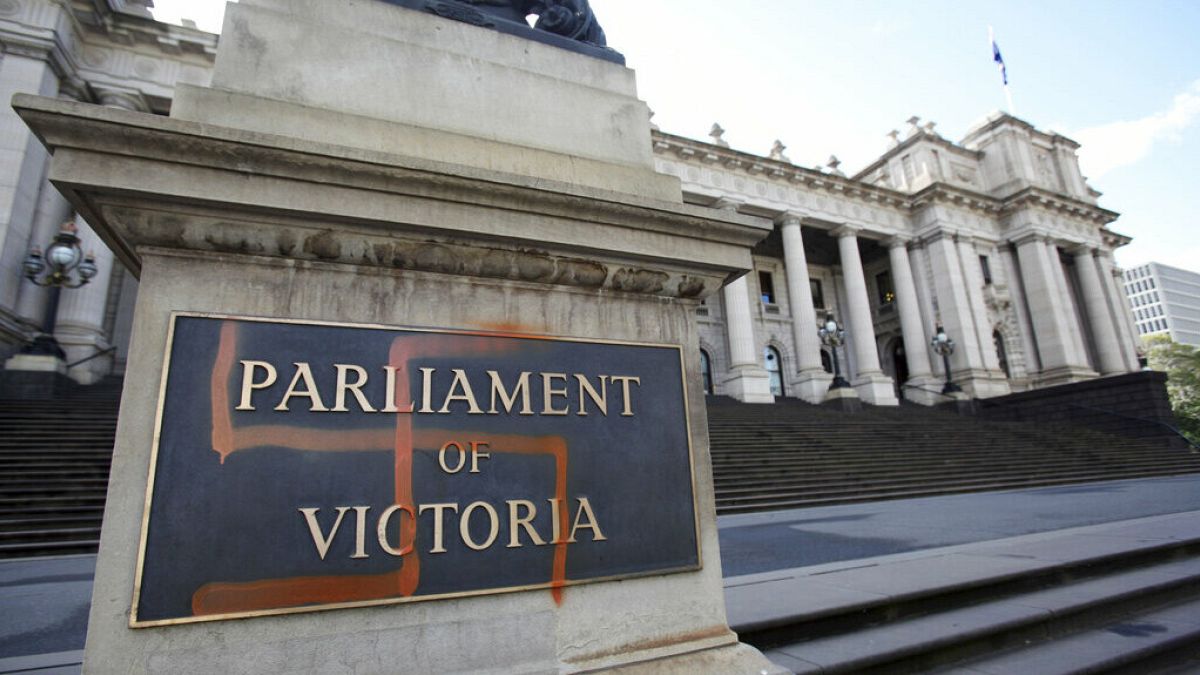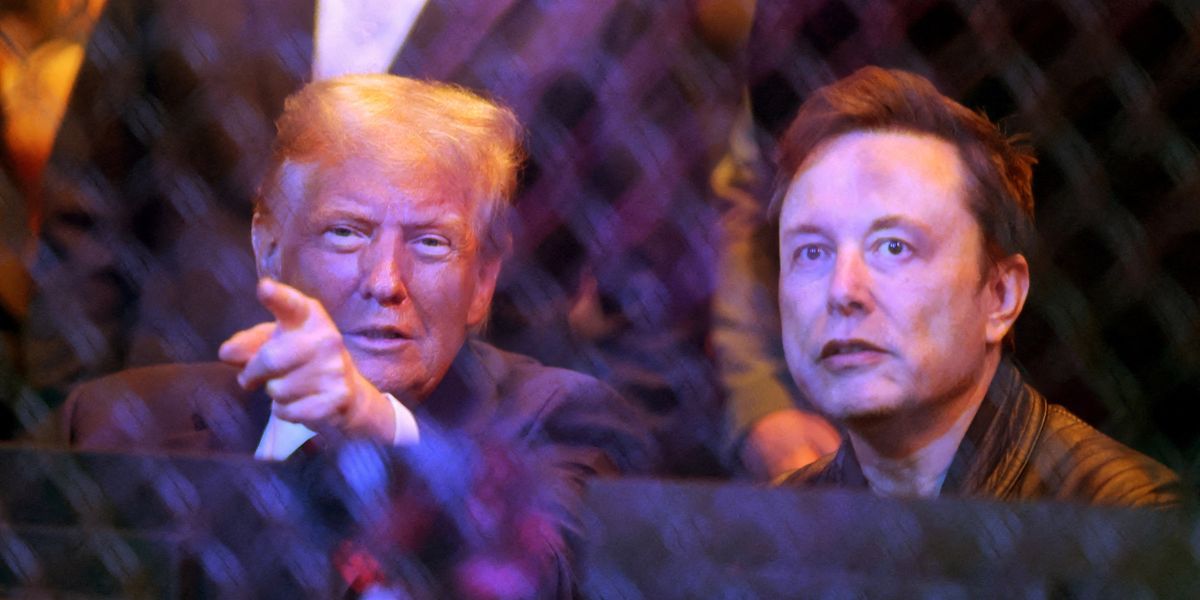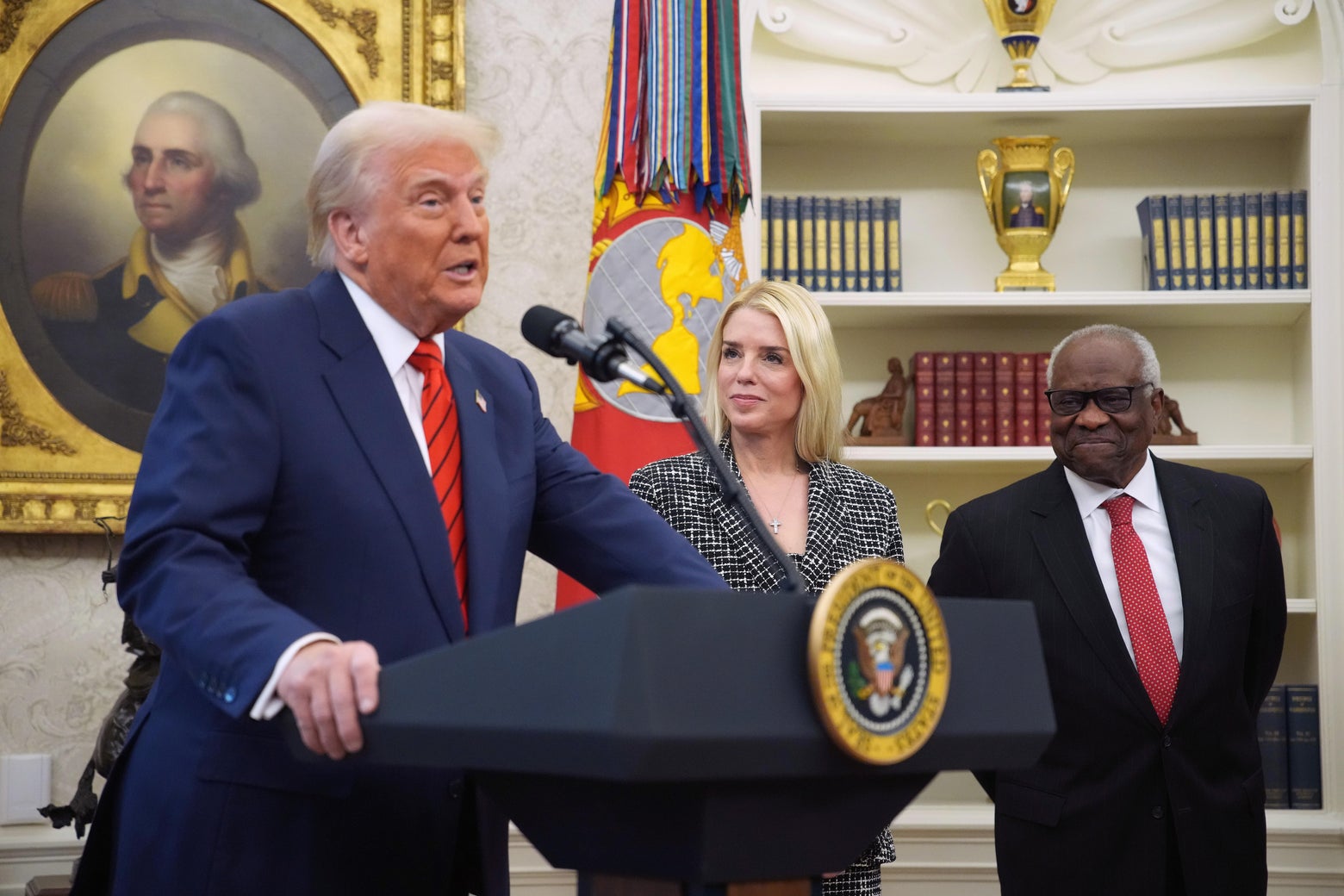When news broke of new US president Donald Trump’s proposal to banish Palestinians from Gaza and turn it into the “riviera of the Middle East”, reactions from the world’s newsrooms were noticeably, well, varied.
The New York Times called it a “brazen plan” while Al Jazeera went a little stronger, declaring: “Trump is a mad man.” The takeover plan “faces global condemnation”, said the Guardian headline, and “UN chief warns of ethnic cleansing”.
The Sydney Morning Herald’s splash called it “outlandish”. The foreign affairs correspondent Matthew Knott said Trump was advocating ethnic cleansing and dressing it up as “a golden real estate opportunity” and referred to experts saying it would be a crime against humanity.
Unusually, News Corp pulled its punches a bit.
“Ultimate Gaza gambit,” The Australian headline read. “Trump stuns world with plan for ownership of war-torn strip.”
“Some method in the madness,” the headline on a piece by the foreign editor, Greg Sheridan, read. Sheridan wrote it was “the most astounding, outlandish, radical, gobsmackingly strange proposal”, but went on to say Trump’s view of the world was “inherently benign”.
Political editor Simon Benson called it Trump’s “latest crazy idea”, one which prime minister Anthony Albanese should definitely respond to.
Further back in the paper, Strategic Analysis Australia’s director, Peter Jennings’s opinion piece (which said the plan had “about as much chance as a snowball in Khan Younis”, but that a new approach was needed) was headlined: “Gaza takeover? It’s worth a try, nothing else is working.”
The Advertiser called it his “Club Med renovation rescue” while the Daily Telegraph went for “stars and strip” and “Trump in a stunning Gaza takeover”. “Two mate solution,” the Courier Mail ran.
“It’s just bananas,” the Cairns Post splashed with, but on closer inspection that was about the floods being responsible for supermarket shelves containing nothing but the yellow fruit.
The whole truth
Ten years ago, a tip arrived in the laps of young Nine newspaper reporters Nick Toscano and Beau Donelly, whispering that famed wellness icon Belle Gibson – who claimed to have healed her brain cancer solely through diet – was not telling the truth.
That whisper became one story which turned into many more, then a book (The Woman Who Fooled the World), which has now inspired a new Netflix drama, Apple Cider Vinegar, out on 6 February.
At first the reporters didn’t believe the tip, which came from a friend of Gibson. “I started that call feeling very critical, almost dismissive of her claims,” Donelly told the Age and SMH’s Morning Edition.
“But I came away from it absolutely fascinated by what she was saying.”
“She struck me as someone who was very intelligent, and who was just horrified, really, for the role she had played in supporting Belle Gibson, who she now believed was a cancer faker.”
“So Beau and I then thought: ‘Well, if she’s lying about this, then what else is she lying about?’,” Toscano told Morning Edition.
Their first story in 2015 revealed that the Instagram star had raised funds for charity from her followers, but did not donate the money. Gibson’s health claims – the foundation of her wellness business, cookbook (The Whole Pantry) and app – then came under increased scrutiny, and began to crumble.
But Donelly and Toscano told the Guardian in 2017 that researching their book was like pulling out teeth.
“Her name was poison,” Toscano said at the time. “I can’t think of another story I’ve covered that’s been so difficult to get people to speak to me.”
“We were shut down by dozens and dozens of people,” Donelly added. “We were threatened with lawsuits by others. It was incredibly difficult.”
Outfoxed
Rupert Murdoch appeared alongside Donald Trump in the White House’s Oval Office on Tuesday while the US president praised the Australian-born nonagenarian media tycoon as an “amazing guy” – though one, he said, that he often disagreed with.
The feeling is apparently mutual, with Murdoch reported to have described Trump as “a fucking idiot” over his immigration policy in 2018. Murdoch also called Trump’s actions on January 6 “pretty much a crime”, according to court documents, and tried to distance himself before returning to the fold after Trump emerged the clear leader in the Republican primaries.
But this time the disagreement was over economic policy. Murdoch’s Wall Street Journal called Trump’s proposed tariffs against China, Canada and Mexico the “dumbest trade war in history” in an editorial. Trump didn’t take kindly to the characterisation, writing on Truth Social that: “The ‘Tariff Lobby,’ headed by the Globalist, and always wrong, Wall Street Journal, is working hard to justify Countries like Canada, Mexico, China, and too many others to name, continue the decades long RIPOFF OF AMERICA.”
But it appears the two managed to put their differences aside with Trump pausing the tariffs on Mexico and Canada at the 11th hour. Globalists 1 – Trump 0.
Murdoch was ostensibly in the White House along with billionaire Larry Ellison to discuss Trump’s plans for a US sovereign wealth fund that he speculated could be used to buy TikTok. If that goes ahead – a big if – then Murdoch would be well placed to advise on (or advise against) any purchase, having previously taken a bath with News Corp’s ill-judged acquisition of Myspace for $580m in 2005. The pioneering social media platform was at one point valued at $12bn, but News Corp sold it in 2011 for $35m.
Mentioning the war
Former footy guy Sam Newman, a man not known for shying away from outrage, at first seemed to have no qualms hosting far-right extremists Blair Cottrell and Thomas Sewell on his podcast. Qualms did come later, after an image posted to X showed the trio, triggering a backlash.
Newman then insisted he in no way endorsed their views, and turned on Cottrell, calling him an “interloper”, an “opportunist”, a “24-carrot-gold scumbag” and a “star fucker” in a second podcast, released on Wednesday.
after newsletter promotion
Listen to the interview in the first podcast, he insisted, as it shows I’m not on their side.
Guardian Australia did listen to the podcast, all 54 minutes of it.
In it, Newman conceded he’ll “probably take a kicking” for having them on, but said that’s why he’s doing it, “because we speak to people of interest”.
“I probably should stop this interview,” he said, but didn’t.
We won’t repeat the revolting Holocaust denialism, conspiracy theories, antisemitism, and white supremacy that got platformed – we were more interested in hearing Newman coherently rebut the Nazi ideology.
“You speak for as long as you like,” he tells his guests at one point. “When you’re finished, I’ll ask you a question because I don’t want to interrupt you.” “Please keep going,” he says at another. “I’d hate to miss any of this,” he says in a discussion about building a white society.
“I’m not sure I agree with anything you say but you might be surprised I agree with a lot of it,” Newman concludes, somewhat ambiguously.
Responding to Newman’s attack on him in the wake of fierce criticism, Cottrell said Newman “naively believed he could interview blacklisted ‘Nazis’ with impunity”.
“You wanted controversy Sam, and you got it,” he said.
Media Watch is back for 2025, as are the Media Watch watchers, whom Guardian Australia occasionally, in turn, watches.
“Not much has changed at the ABC’s Media Watch,” read the headline on columnist Chris Kenny’s piece about the show’s debut with new host Linton Besser.
The show will keep targeting News Corp, Kenny lamented, while conceding News gave Besser an easy target. It’s all so “predictable”, Kenny said.
Heaven forbid predictability.
Here’s a sample of headlines from Kenny’s work last year:
“Chris Kenny slams ABC Media Watch host Paul Barry.”
“Chris Kenny hits out at ABC Media Watch host.”
“Chris Kenny slams Media Watch host.”
“Chris Kenny hits out at ABC … and in particular Media Watch host Paul Barry.”
News Corp’s challenging financials
News Corp’s latest financials offered a rare, but still limited, insight into parts of its Australian operations after a rejig of its financial reporting lines.
The US company said Sky News Australia generated $US17m ($27m) in revenue in the last three months of 2024.
The revenue generated by the local television network is not usually separately disclosed, and we don’t know what the costs of the division were, which determines whether a business unit is profitable.
We do know that Sky’s revenue stream was “flat compared to the prior year”, so it was likely neither a terrific nor terrible 12 months for the news and conservative commentary network.
Broadcasters, print and digital news services have been enduring a challenging period for advertising as businesses try to rein in costs during the inflationary period.
Sky’s revenues will now flow into News Corp’s news media reporting segment that includes a global newspaper stable such as The Sun and The Times in London, and the New York Post. This all came about because the media conglomerate sold Foxtel, which was previously housed in a reporting unit that included Sky.
Analysts are happy with the sale of the once dominant pay television service which had become “structurally challenged”, according to Morningstar, given the huge number of streaming services around these days.
News Corp Australia, a division that includes flagship newspaper The Australian, suffered a modest slide in subscription and advertising revenues over the past 12 months, even as digital subscriptions increased.
While advertising revenue is still challenging for News Corp’s wider media division, the company’s share price is firing, up about one-third over the past 12 months.
This has been driven by strong gains in its business news-focused Dow Jones unit, book publishing and digital real estate assets.
Overall, the Murdoch family-backed company reported a 5% revenue increase in the quarter to $US2.24bn ($3.6bn).
















